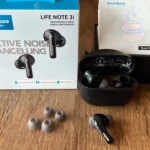In the realm of filmmaking and video production, the ability to use anamorphic lenses and accurately desqueeze footage is crucial for achieving cinematic visuals. The Sony FX30 has gained attention for its advanced features and versatility, but one common question among filmmakers is whether the Sony FX30 supports anamorphic desqueeze. This article delves into the specifics of the Sony FX30’s capabilities regarding anamorphic desqueeze, offering a comprehensive analysis of its performance and features.
Understanding Anamorphic Desqueeze
Before diving into whether the Sony FX30 supports anamorphic desqueeze, it’s essential to understand what anamorphic desqueeze entails. Anamorphic lenses are designed to capture a wider field of view and achieve a distinct cinematic look by compressing the image horizontally. The footage shot with anamorphic lenses appears squeezed and must be desqueezed during post-production or playback to display correctly. Desqueezing essentially stretches the image horizontally to restore the intended aspect ratio and visual aesthetics.
Sony FX30 Overview
The Sony FX30 is a notable entry in Sony’s lineup of compact cinema cameras, catering to filmmakers who seek high performance in a more portable form factor. Here’s a quick overview of its specifications and features:
Key Specifications
- Sensor: 26.1 MP APS-C Exmor R CMOS
- Processor: BIONZ XR
- Video Recording: 4K up to 120p, 10-bit 4:2:2
- ISO Range: 80-102400
- Connectivity: HDMI Type-A, USB-C, 3.5mm audio jacks
- Screen: 3.0-inch LCD touchscreen
Features Relevant to Anamorphic Desqueeze
The Sony FX30 is designed to meet the needs of modern filmmakers, but specific features related to anamorphic desqueeze are crucial for understanding its capabilities.
Does Sony FX30 EDO Anamorphic Desqueeze?
Electronic Desqueeze (EDO) Functionality
The term EDO refers to Electronic Desqueeze, which is a feature that allows the camera to electronically process and display anamorphic footage in its desqueezed form. This functionality is critical for filmmakers who use anamorphic lenses and need to see the desqueezed image in real time while filming.
Sony FX30’s Support for Anamorphic Desqueeze
As of the latest updates and firmware versions, the Sony FX30 does support anamorphic desqueeze. This feature allows users to record and monitor anamorphic footage in its corrected aspect ratio directly on the camera’s LCD screen. The Sony FX30 offers desqueeze options for different anamorphic ratios, such as 1.3x, 1.8x, and 2.0x, which are common in anamorphic lenses.
How to Enable Anamorphic Desqueeze on Sony FX30
To enable anamorphic desqueeze on the Sony FX30:
- Access the Menu: Go to the camera’s settings menu.
- Navigate to Display Settings: Find the display settings or monitor settings section.
- Select Anamorphic Desqueeze: Choose the appropriate desqueeze ratio that matches your anamorphic lens.
- Confirm and Save: Apply the settings and ensure they are saved.
This feature enhances the shooting experience by allowing filmmakers to see the footage as it will appear post-desqueeze, aiding in composition and framing.
Benefits of Anamorphic Desqueeze in the Sony FX30
Real-Time Monitoring
One of the primary benefits of having anamorphic desqueeze on the Sony FX30 is the ability to monitor the footage in real time. This feature is particularly useful during filming, as it ensures that the composition and framing are accurate without the need for post-processing adjustments.
Accurate Composition
By using anamorphic desqueeze, filmmakers can avoid common pitfalls associated with composing shots with squeezed footage. This ensures that the visual elements are correctly aligned, enhancing the overall quality of the final product.
Workflow Efficiency
Anamorphic desqueeze support directly in the camera streamlines the workflow, reducing the need for extensive post-production corrections. This efficiency can be crucial for tight shooting schedules and tight budgets.
Comparing Sony FX30 with Other Cameras
When comparing the Sony FX30 to other cinema cameras, it is evident that many high-end models offer anamorphic desqueeze capabilities. For instance, cameras like the Sony FX6 and RED Komodo also support this feature, highlighting its importance in professional filmmaking.
Sony FX30 vs. Sony FX6
The Sony FX6 also provides anamorphic desqueeze functionality, but with additional features such as a full-frame sensor and higher frame rates. The FX30, while more compact and budget-friendly, provides similar desqueeze features, making it a viable option for filmmakers who need high performance in a smaller package.
Sony FX30 vs. RED Komodo
The RED Komodo, known for its 6K resolution and global shutter, also supports anamorphic desqueeze. However, the Sony FX30’s cost-effectiveness and compact size make it a compelling choice for those who prioritize portability and affordability without compromising essential features.
Conclusion
In conclusion, the Sony FX30 does indeed support anamorphic desqueeze, a feature that is invaluable for filmmakers using anamorphic lenses. This capability enhances the filming experience by allowing real-time monitoring and accurate composition of anamorphic footage. The integration of this feature makes the Sony FX30 a strong contender in the realm of compact cinema cameras, offering both performance and versatility.
As you consider your options, think about how important anamorphic desqueeze is to your workflow. Will the Sony FX30’s capabilities meet your needs, or is there another camera that better suits your specific requirements?










